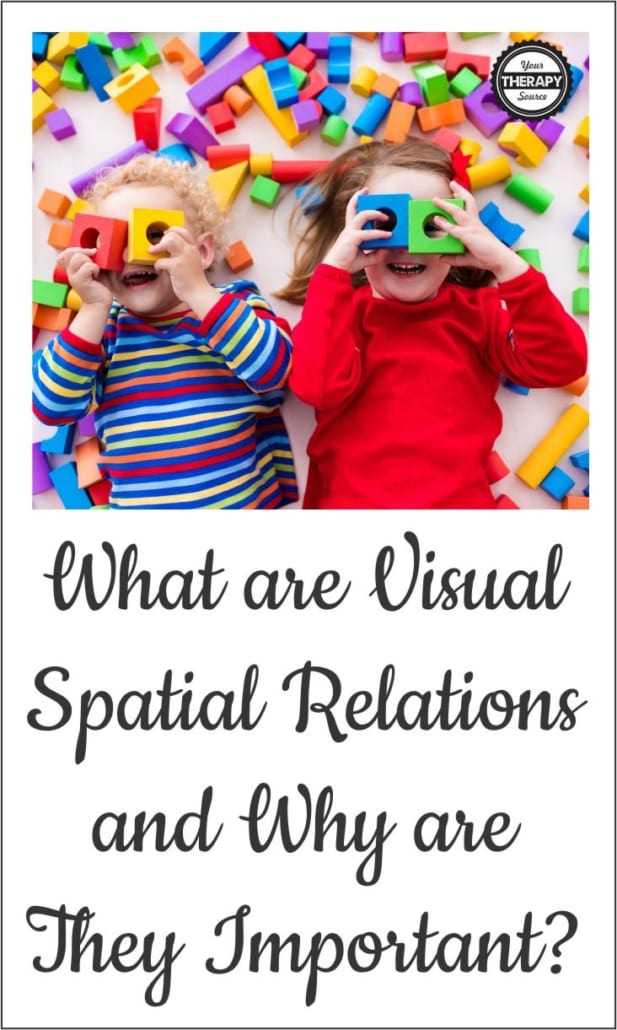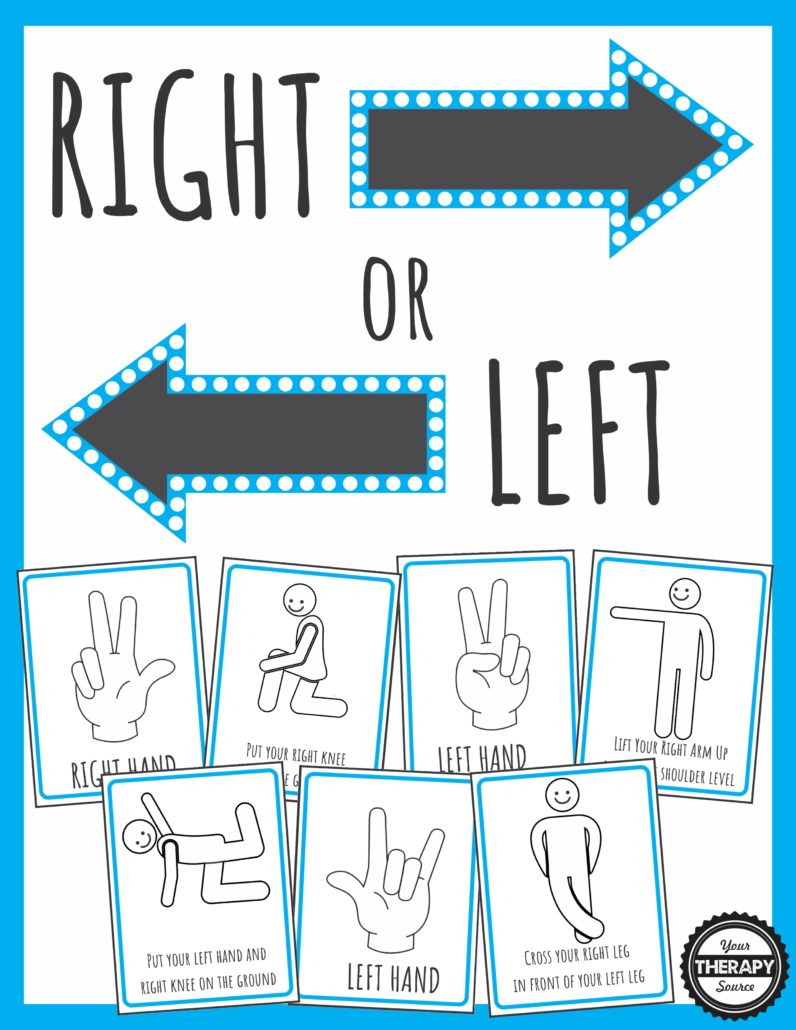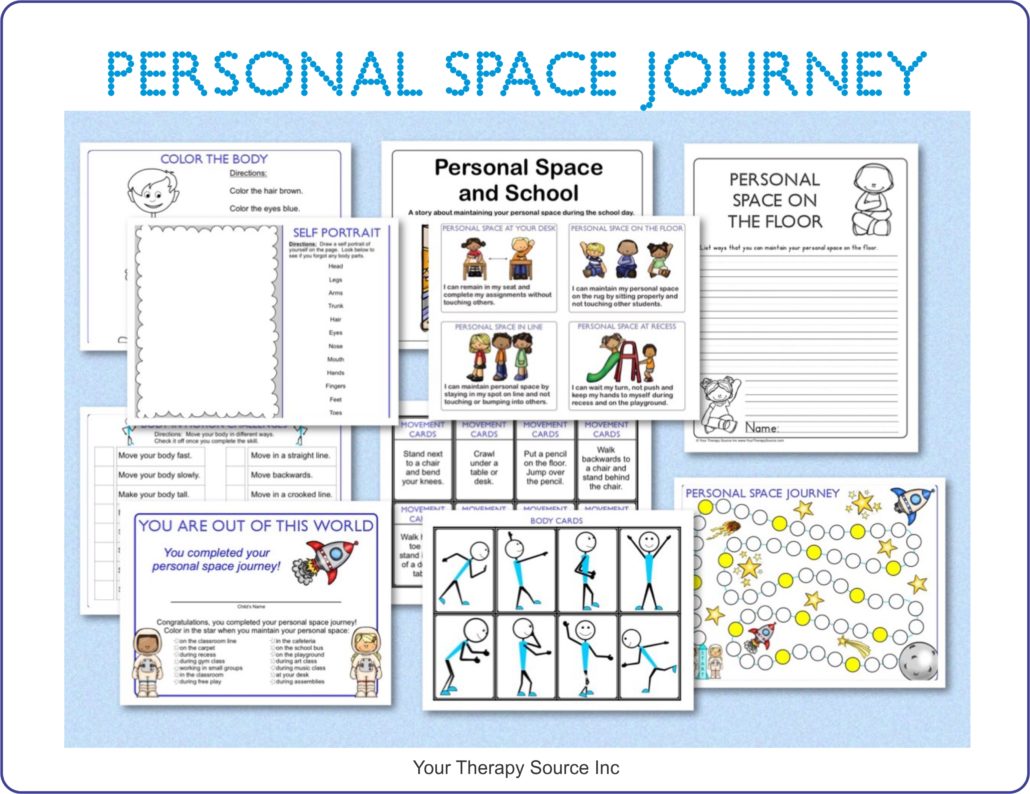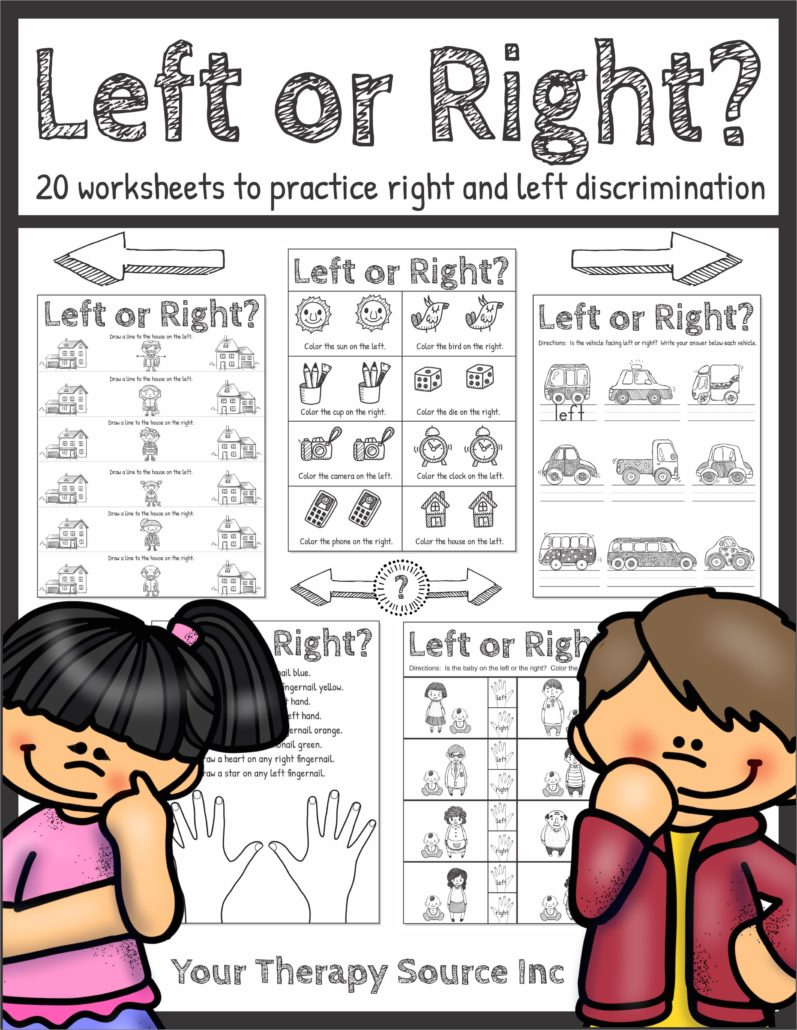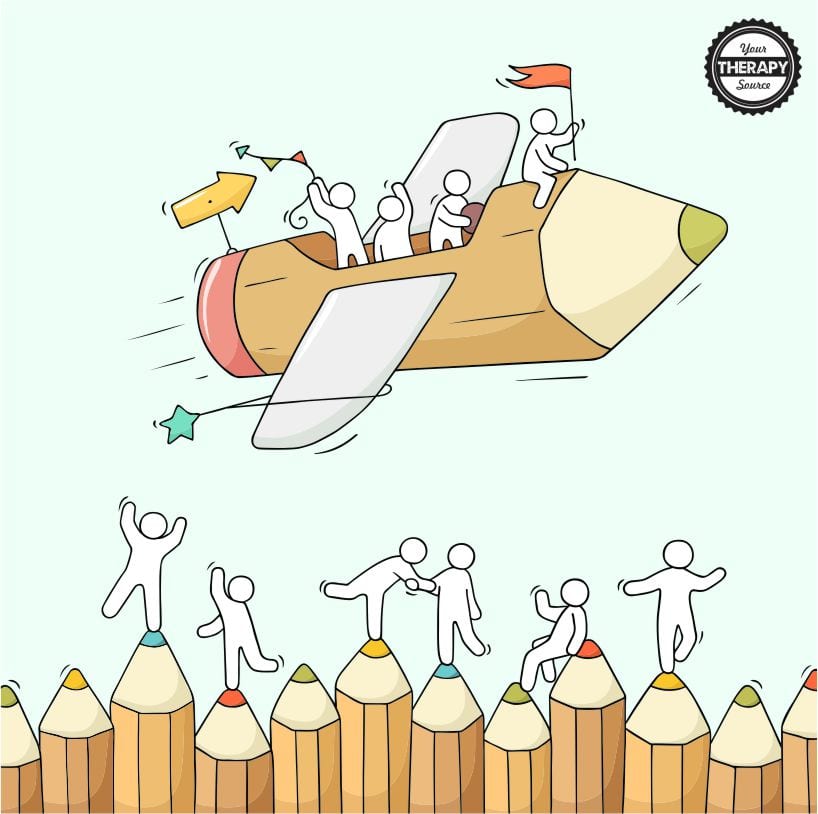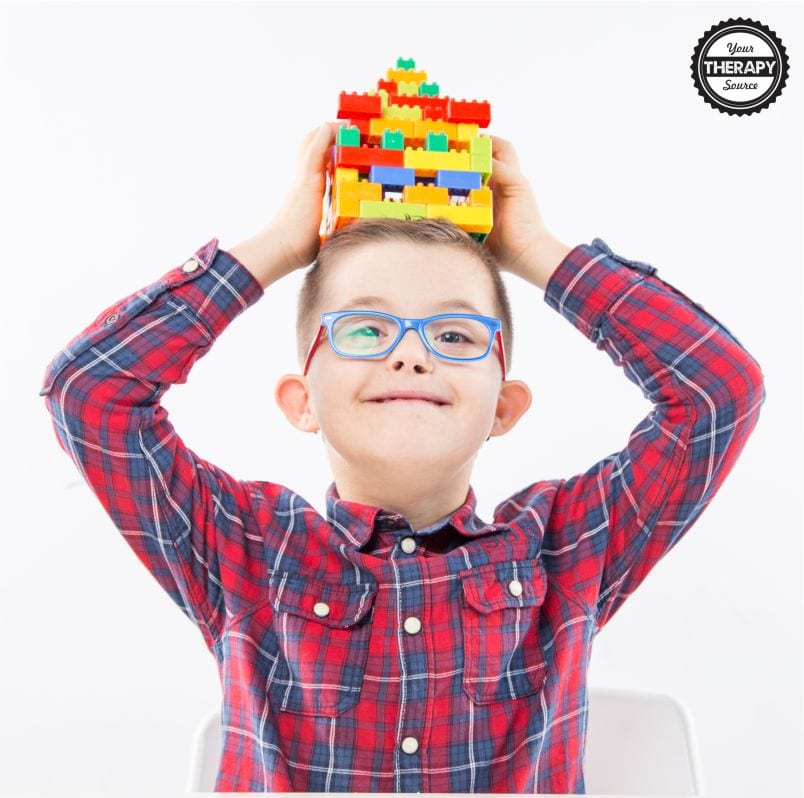What is Spatial Awareness?
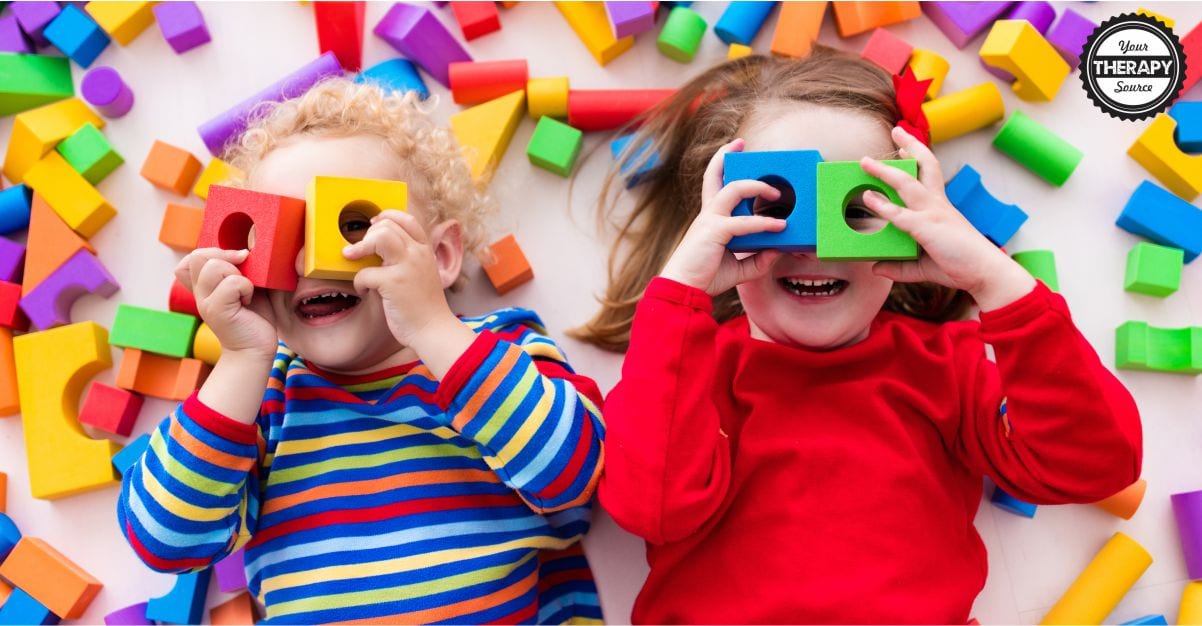
What is spatial awareness? The definition of visual-spatial relations is the ability to visually perceive two or more objects in relation to each other and to yourself.
Why are visual-spatial relationships important?
The ability to determine spatial awareness and relationships is important in everyday tasks at school and at home. You need to interpret what it means to stand first in a line”, “sit in front of Johnny” or “put the pencil on top of the paper”. If you have difficulty perceiving spatial relationships it can affect your motor skills, body awareness, problem-solving, activities of daily living and your overall performance in school.
How can you help a child develop spatial awareness?
Children need adequate visual-spatial skills to function properly in school and at home. If you have concerns about your child’s visual skills, be sure to start out by having your child undergo a thorough vision examination by an optometrist or an ophthalmologist (medical doctor).
If your child has difficulties with spatial awareness try:
- breaking down complex skills or activities into smaller parts (i.e. for a multi-step project only provide the student with directions for one step at a time).
- use a multi-sensory approach to teaching concepts (i.e. let the child move under, over, in between to understand the concepts).
- keep the classroom or home environment the same (i.e. do not move around furniture) and keep school supplies the same (i.e. let the child keep his/her own supplies and not share).
Here are activity ideas that will help a child to develop visual-spatial relationships:
- play any movement activities such as obstacle courses or using playground equipment so that the child has to move under, over, in between, left, right, through, next to, high or low to help the child learn the relationship of the body to objects.
- play movement games with boundaries such as tag, hopscotch, hula hoop games and more.
- complete chores such as setting the table, dusting or sweeping where child has to move around objects.
- play with building type toys such as wooden blocks, interlocking blocks and railroad tracks.
- complete projects such as model cars, various craft kits, or worksheets where you have to follow directions such as glue this circle to the yellow square.
- practice copying pictures from paper then increase the challenge by copying a picture from far away.
- play board games that require you to move your pieces in certain directions such as checkers or chess.
- complete multi-step craft activities such as origami.
What does the research say about spatial awareness?
Visual-spatial relations can affect a child’s abilities to function in school for academic skills as well as social skills. We use visual spatial relations for skills such as reading, writing, math, gym class, recess, maintaining personal space and more! Research studies have been done on visual spatial relations in children. Here are some we have highlighted in the past.
Coordination, Visual-Spatial Skills, and Handwriting
Frontiers in Psychology published research examining the relationship between motor coordination and handwriting skills, and to identify differences in handwriting between children without and with coordination difficulties with a focus on visual-spatial skills. The researchers concluded that general motor coordination does not have a direct link with the execution of graphic gesture patterns. Children with mild motor dysfunction were lower in visual reasoning abilities with respect to those with normal and good motor function.
Reference: Scordella, A et al. The role of general dynamic coordination in the handwriting skills of children. Front Psychol. 2015; 6: 580. Published online 2015 May 7. doi: 10.3389/fpsyg.2015.00580
Visual Versus Verbal Prompts to Promote Visual-Spatial Skills
Instructional Science published research on the potential effect of an experimental visual–spatial intervention procedure and possible training benefits of two prompts: one group received training with verbal and visual prompts, a second group training with visual prompts only, while a third, control group did not receive any training.
The results indicated the following:
1. the two training methods (verbal/visual or only visual prompts) led to significant improvements of performance in visuospatial tasks as compared to control group.
2. both training methods improved visuospatial tasks about the same amount.
The researchers concluded that there are benefits to interventions targeting visuospatial processing skills. The interventions did not seem to change based on age or gender. It appeared that visual cues are particularly effective.
Reference: Ellahe Chabani, Bernhard Hommel. Effectiveness of visual and verbal prompts in training visuospatial processing skills in school age children. Instructional Science November 2014, Volume 42, Issue 6, pp 995-1012
Evidence on Visual Spatial Skills Influence on Math Skills
There is a significant amount of evidence that supports the notion that visual spatial skills are linked to individual differences in math abilities. Children who have better spatial skills when compared to their peers have better math skills.
Visual-spatial working memory, form perception, and spatial visualization are all have been shown to be predictors of math skills in school-aged children. In addition, before school-age, spatial assembly skill has been shown to be predictive of math skills. Even at the infant level, visual-spatial skills can predict math abilities at age 4. One study showed that visual-spatial skills at age 3 were predictive of math knowledge even two years later after controlling for earlier math knowledge and executive function skills. Visual-spatial working memory at age 4.5 was also able to predict math achievement through Grade 3.
Another preschool study indicated that patterning and spatial skills predicted math knowledge at the beginning and end of preschool. The researchers recommended that standards for early math should include pattern and spatial skills.
Reference: Rittle-Johnson, B., Zippert, E. L., & Boice, K. L. (2019). The roles of patterning and spatial skills in early mathematics development. Early Childhood Research Quarterly, 46, 166-178.
Visual Spatial Abilities and Number Skills in Children
The Journal of Experimental Psychology published research on visual-spatial abilities and number skills in children. The verbal abilities, visual-spatial abilities, and verbal number skills were assessed for the 141 children (5-6 years old) who participated in the study. After statistical analysis, the relationship between verbal and visual-spatial abilities to verbal number skills indicated the following:
- Only visual-spatial abilities emerged as a significant predictor of verbal number skills.
The researchers concluded that visual-spatial abilities contribute to a larger extent to children’s verbal number skills than verbal abilities which is important for the conception of early mathematics assessments and interventions.Another study assessed a spatial orientation task, a spatial visualization task and visual-motor integration task in 125 kindergarten children. The researchers determined:
- that the role of spatial skills, notably spatial orientation, were important for mathematical development.
Since some components of spatial skills may be more predictive of mathematical development than others it is important to differentiate spatial skills when it comes to understanding numerical development.
References:Cornu, V., Hornung, C., Schiltz, C., & Martin, R. (2017). How Do Different Aspects of Spatial Skills Relate to Early Arithmetic and Number Line Estimation?. Journal of Numerical Cognition, 3(2), 309-343.Cornu, V., Schiltz, C., Martin, R., & Hornung, C. (2018). Visuo-spatial abilities are key for young children’s verbal number skills. Journal of experimental child psychology, 166, 604-620.Need ideas to differentiate visual-spatial skill practice?
Resources to Help Children with Visual-Spatial Relations
Right or Left Games – Practice Right Left Discrimination
15 Free Visual Spatial Printables
